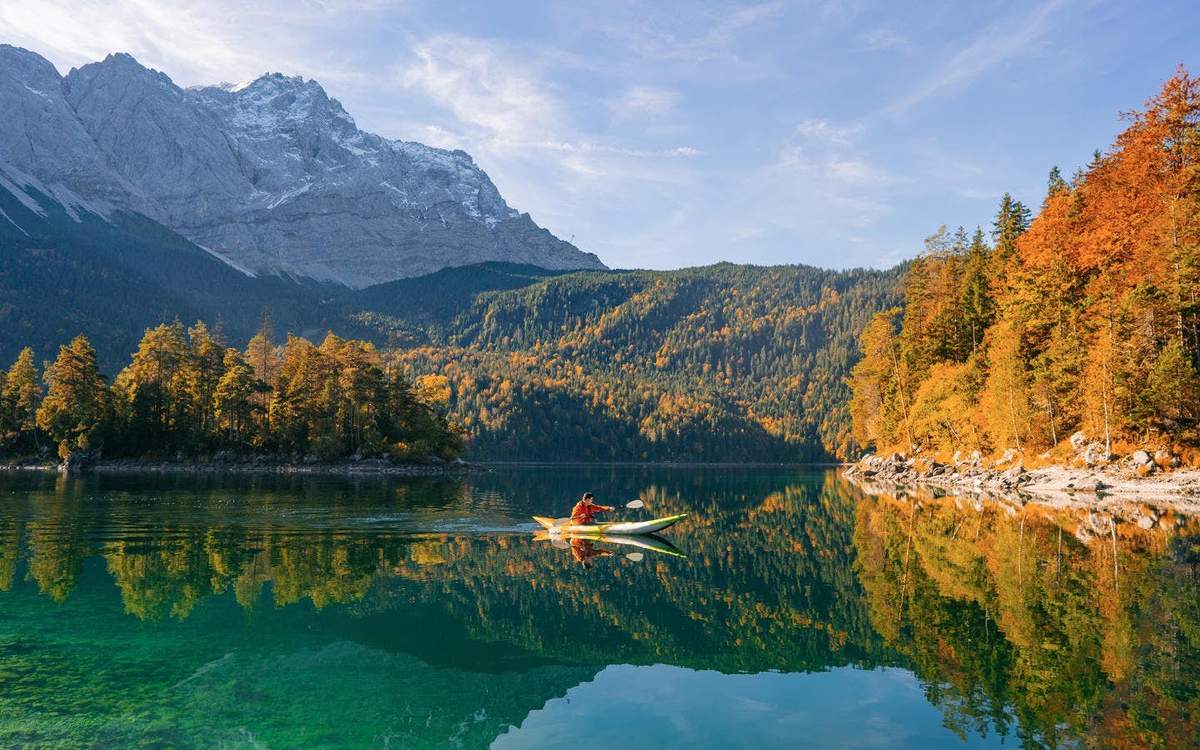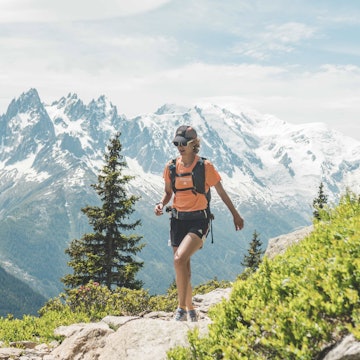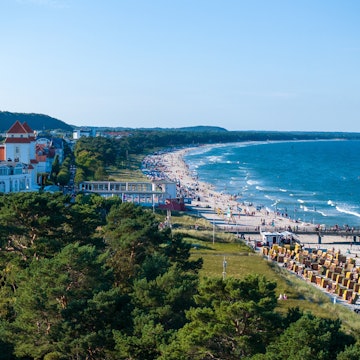
6 highlights of a road trip across Bavaria and Baden-Württemberg
Jun 19, 2025 • 5 min read

Diving into the Obersee, the Bavarian Alps. Valentin Wolf/Getty Images
Northern Europe has a reputation for grayness – yet southern Germany positively glows.
From the amber tones of giant beer mugs to the golden sunshine of Freiburg to the sparkle of glorious Alpine lakes, Bavaria and Baden-Württemberg deliver warmth in many ways.
When you’re not tramping up glorious mountains and through lush meadows, or pottering down medieval lanes and alleys, the delights of this part of the country are best appreciated by car. Germany’s roads are excellent, while the region’s landscapes will sure make you want to pull over and gawk in wonder.
So after you’ve had your fill of Germany’s most popular places, we suggest hitting the road to discover the highlights of two of the country’s most picturesque states. Here are six experiences you shouldn’t miss.
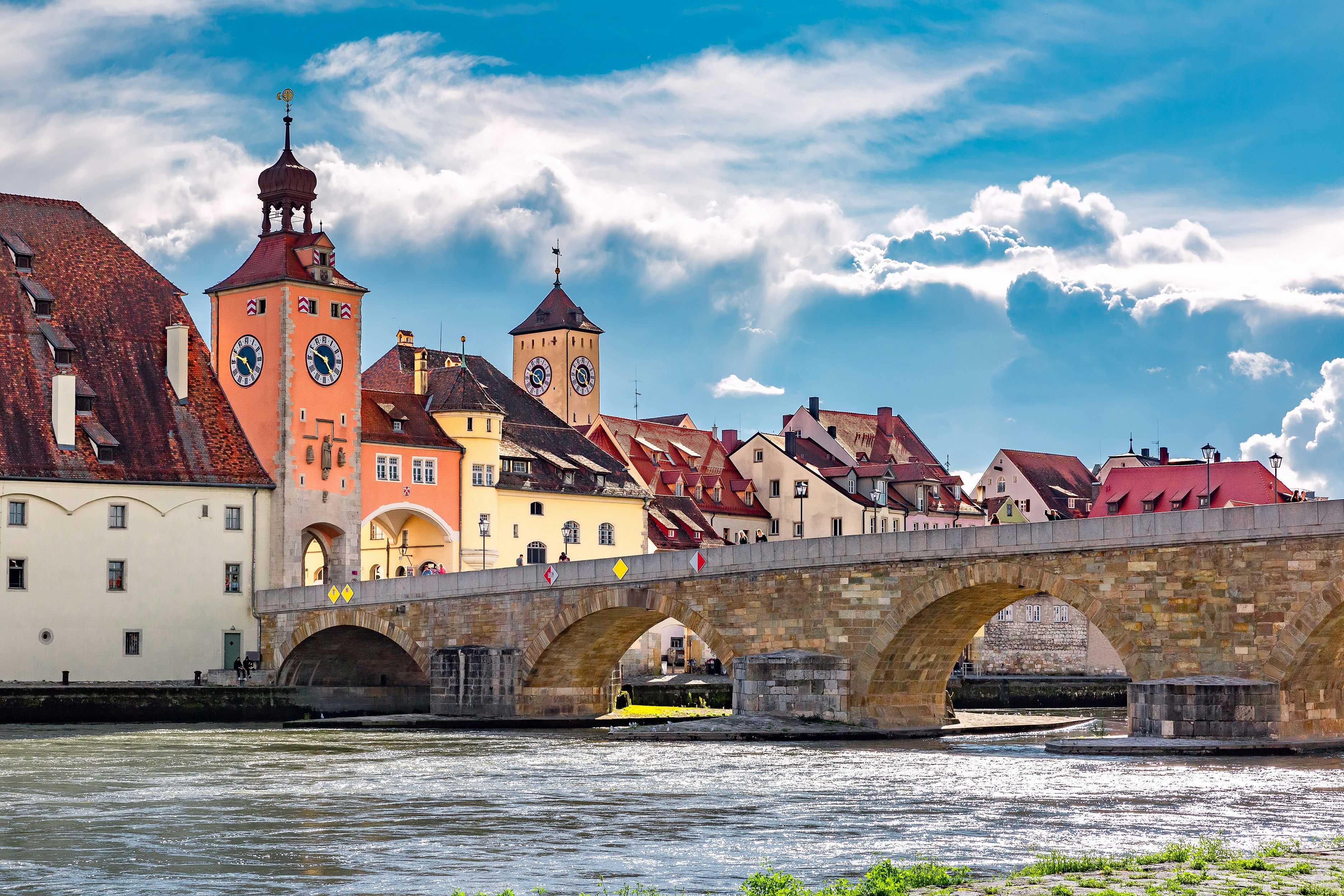
1. Relish the Roman history of Regensburg
Riverside Regensburg is home to one of only two Roman relics still standing north of the Alps – and it shows. What was once a remote Roman camp morphed into a convenient stopover for Charlemagne and the Carolingians. Eventually, the construction of a stone bridge across the Danube in the 10th century CE transformed Regensburg into a critical regional trade center, a position it held until the discovery of the Americas shifted trade routes west.
Unlike the rest of Germany, Regensburg was largely spared during World War II, which means its narrow streets and alleys remain much the same as a thousand years ago (or even further back). Even the Stone Bridge is intact, and it’s a thrill to stroll across a span once trod by Crusaders on their long march to Jerusalem.
While the medieval vibes are extremely fun, Regensburg is livelier than ever today. Sure, there are museums both serious and quirky (golf fans, take note), but most of the history here isn’t fusty at all. Don’t miss, for example, the Wurstkuchl next to the Stone Bridge, which has been slinging bratwurst, sauerkraut and Bavarian sweet mustard since 1135.
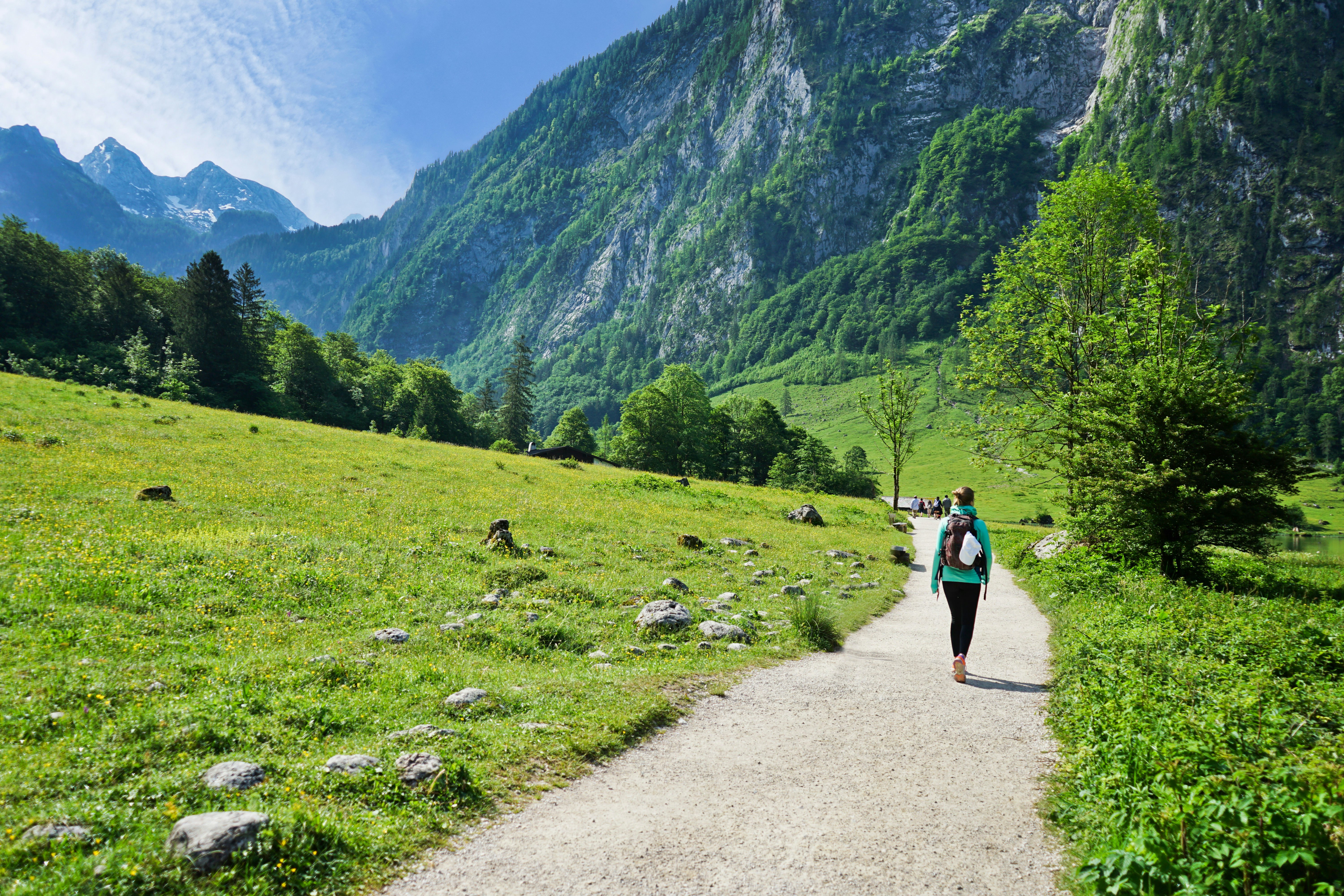
2. Head off for a hike in the Bavarian Alps
You’ll be glad you had that extra wurst when you get into the Bavarian Alps. Though Germany is home to only a small slice of the range, the peaks’ proximity to a major hub like Munich means they are remarkably accessible. What’s more, you get to marvel at the mountains as they shoot up suddenly from the central German plain.
While you can enjoy the Alps from behind a car windshield, or over the rim of an oversized beer stein on the wooden terrace of a ski chalet – but if you have the chance to hike, absolutely do. The intensity of the uphill trek makes the experience of rounding a bend and catching sight of jagged, snowy peaks as far as the eye can see that much sweeter. You wouldn’t be the first hiker to burst into a spontaneous yodel (as soon as you catch your breath).
Some of Germany’s best hiking can be found in Berchtesgaden National Park, as well as the region’s most picturesque mountain lake, the Königssee. To enjoy both, try the trail that travels from the southern end of the Königssee to the Obersee.

3. Soak up the sun in Freiburg...
Visitors to Freiburg im Breisgau should start at the Schwabentor, followed by an 800m (2625ft) hike onward to the adorable lookout tower on top of the Schlossberg. Survey the town’s gabled houses, medieval street plan and storybook plazas before catching the Schlossbergbahn cable car back down the hill for a schnitzel lunch, a Weizenbier and a nap.
Not only are the cafes that spill out onto Freiburg’s plaza friendly and gemütlich, but the city itself also enjoys 2000 hours of sunshine a year – making this the warmest city in Germany, temperature-wise. You’ll likely find it warm in other ways as well.

4. ...then get witchy in the Black Forest
Bavaria has the Alps; Baden-Württemburg has the Black Forest. Serious walkers can carry on from Freiburg’s Schlossberg into the fabled woods. A 17km (10½-mile) hike delivers you to the 11th-century St Peter Abbey; a different 25km (15½-mile) hike leads to Kandel Mountain, where folks hunted witches in the Middle Ages. Keep your eyes peeled for the shapeshifting witch Gfällrote; you’ll know her by her two immortal canine companions and her wicked red eyes.
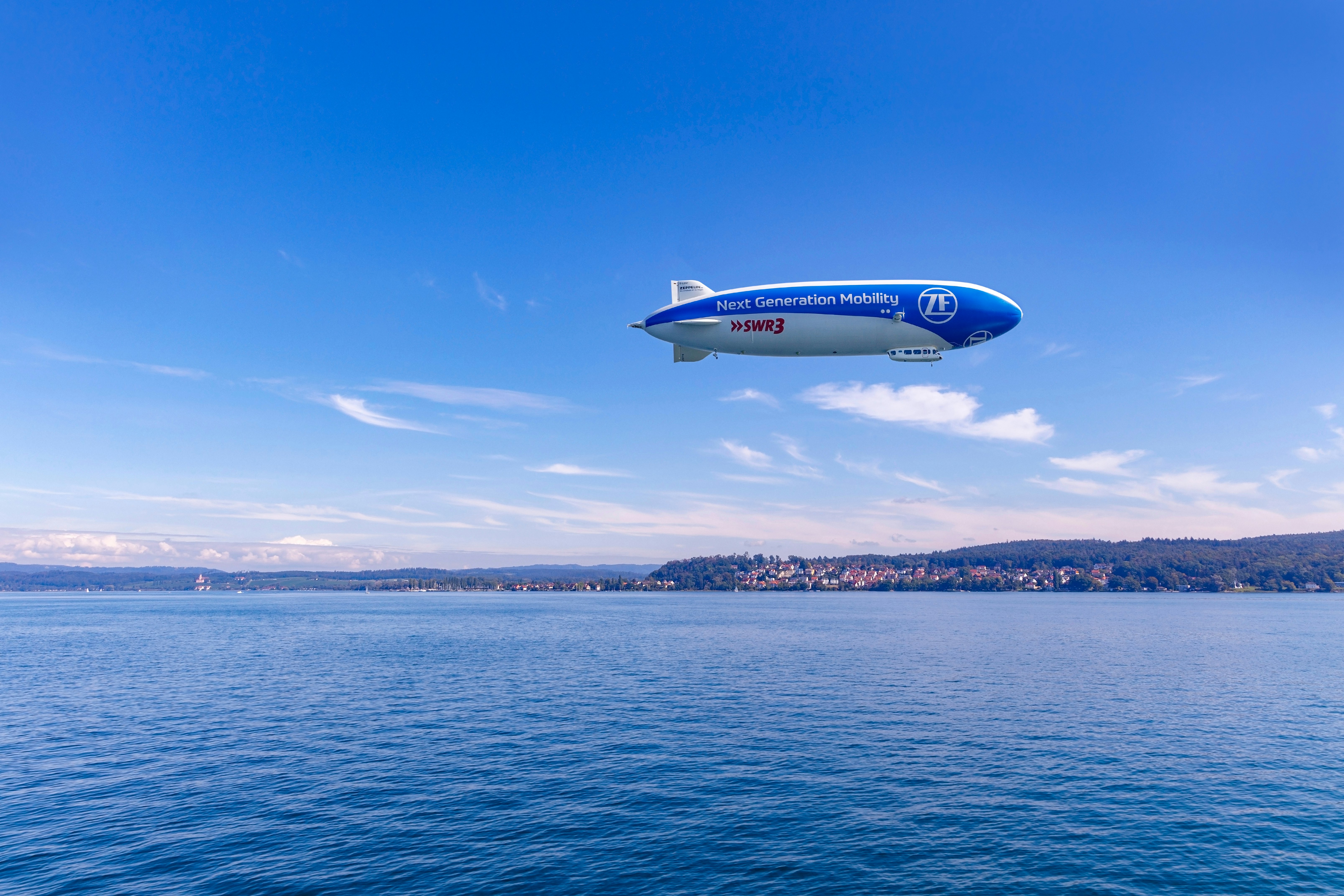
5. Soar above Lake Constance in a Zeppelin...
Straddling the borders of Germany, Austria and Switzerland, Lake Constance on the other side of the state is a scenic place to cool off. The German bit of the lake’s 270km (168-mile) shoreline is known as the Obersee; from the lakeside promenade at Friedrichshafen, you can gaze across the lake’s expanse at the spires of the Swiss Alps beyond.
Aside from the stunning views, Friedrichshafen is known as the birthplace of a certain famous rigid airship. In the 1890s, the excellently named Count Ferdinand von Zeppelin became a pioneer in the field of aeronautics when he invented his eponymous passenger vessel, a cigar-shaped ship fueled by hydrogen gas. The full story is available at the Zeppelin Museum in town; to really experience the vehicle’s allure, you can take a ride aboard a Zeppelin over the lake to soak in fantastic views over three countries. (Note that there’s no risk of disaster these days, for contemporary Zeppelins are powered by non-flammable gas.)
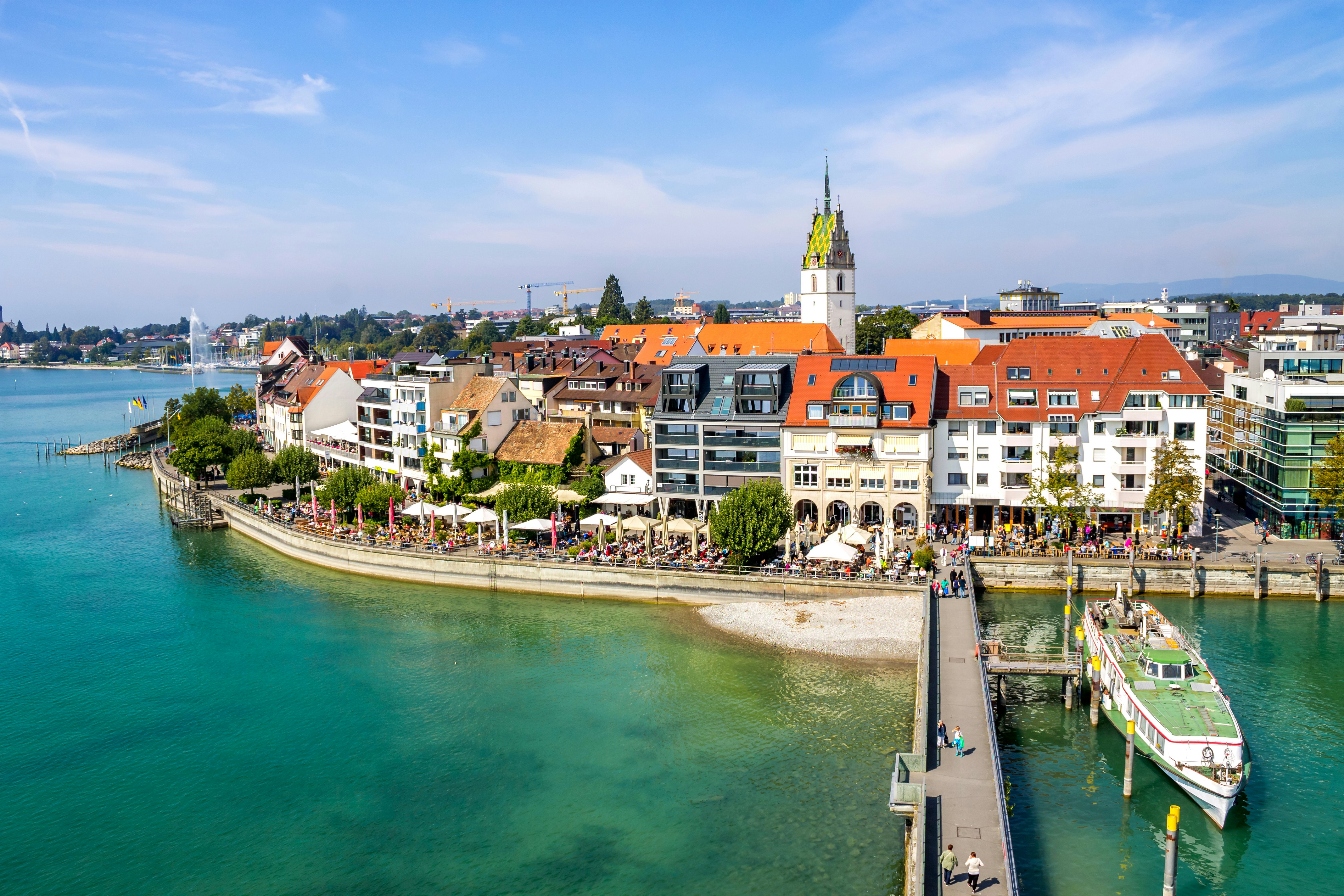
6. ...then dive into the lake’s refreshing waters
When you’re back on terra firma, get off it again – by diving into the lake for a swim. The Strandbad Friedrichshafen (€3.50/US$4.04) is a convenient public swimming spot right on the lake with a grassy strip for sunbathing, a snack bar and hot showers. After you’ve worked up an appetite, head to s’Wirtshaus am See, a jolly lakeside restaurant where you can sample lake perch or traditional fare such as Allgäuer Käsesuppe (cheese soup) or Schweitzer Wurstsalat (Swiss sausage salad).





